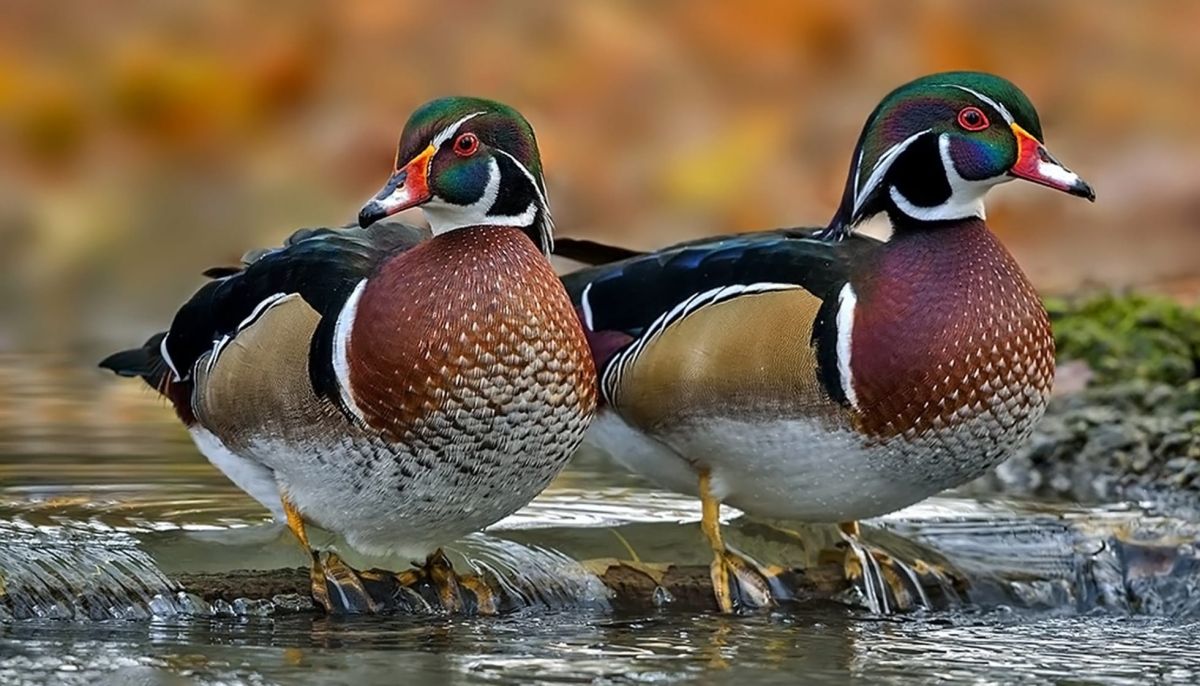There are over 160 duck species in the world, and there are a few categories they can fall under. So, let’s take a look at the different types of ducks along with some examples of species for each type.
What are the Main Types of Ducks?
Most duck types fall into one of three categories: dabbling, diving, or perching ducks. These types describe the behavior of the ducks. Many domesticated ducks have a unique mixture of these types.
Dabbling Ducks
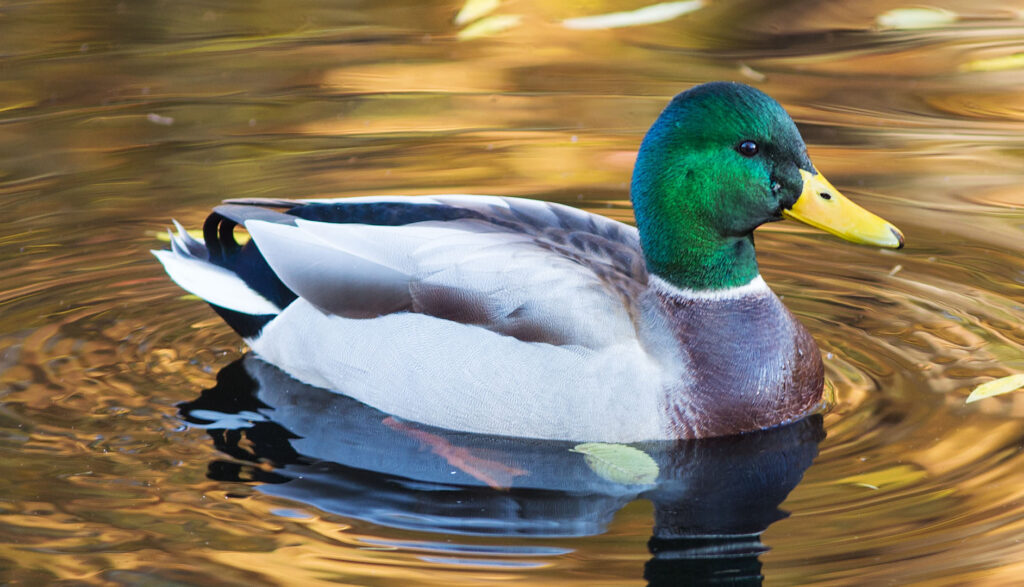
Dabblers are ducks that forage for food on the water’s surface. They float high on the water and stick their heads under to grab their meals. They don’t fully submerge their bodies.
If you see a duck stick their head underwater while their rump stays afloat, that’s a dabbling duck. They “dabble” as they do this, moving the water around gently to find food.
Diving Ducks
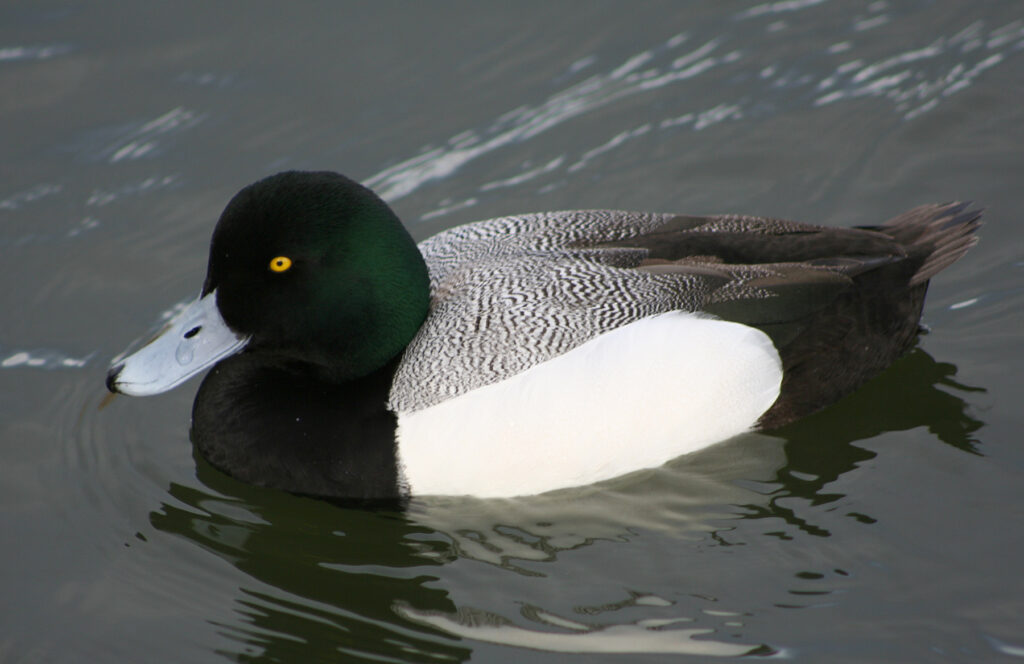
As the name implies, diving ducks are ducks that dive below the water’s surface to find food. They often submerge their entire bodies underwater. They hang out in deeper bodies of water than dabbling ducks.
Diving ducks are usually less comfortable on land than dabbling ducks because their legs sit further back on their bodies. They can fly well once they’re in they’re in the air, but their flat, narrow wings make it harder to take off.
Perching Ducks
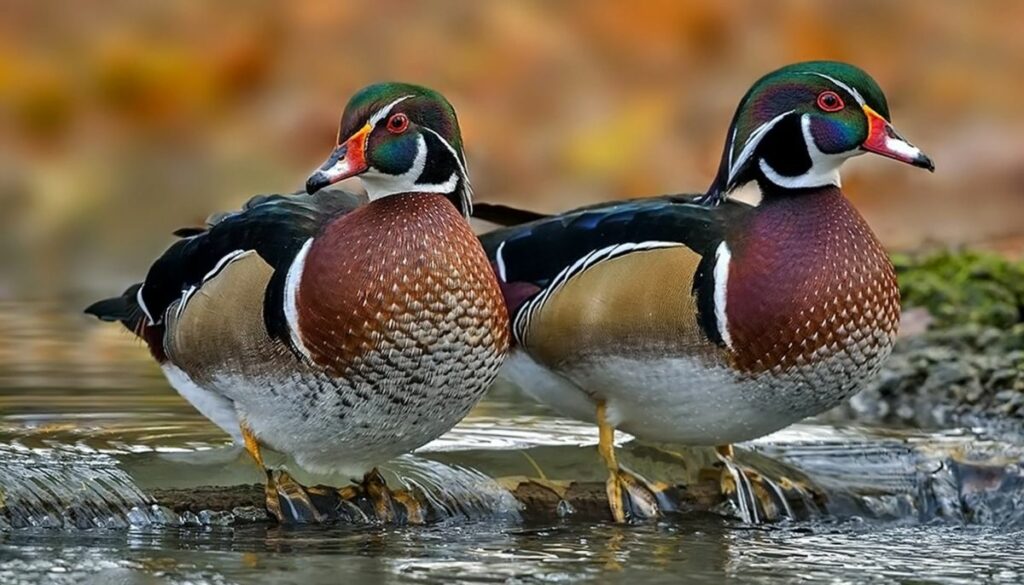
Perching ducks are the most comfortable on land. While a few species can also be divers or dabblers, most perching ducks have qualities that are unique from the other two types. These ducks are known for nesting high in trees.
These ducks have long claw-like toes that help them climb and cling onto trees better. Even though they spend a lot of time in trees, they still enjoy aquatic food.
Species of Ducks in Each Category
Now that you know the main types of ducks, you might be wondering what ducks fall into each category. Here are some examples of dabbling, diving, and perching duck species.
Before we dive in, here’s a types of duck chart:
| Dabbling Ducks | Diving Ducks | Perching Ducks |
| Mallard | Redhead Duck | Blue Duck |
| Wood Duck | Canvasback | Brazilian Teal |
| Gadwall | Harlequin Duck | Comb Duck |
| Cinnamon Teal | Bufflehead | Torrent Duck |
| Blue-Winged Teal | Hooded Merganser | Muscovy Duck |
| American Wigeon | Black Scoter | Ringed Teal |
| Eurasian Wigeon | Common Goldeneye | |
| Northern Pintail | ||
| Northern Shoveler |
Dabbling Ducks
Dabbling is the biggest of the three kinds of duck. There are estimated to be about 38 dabblers, and here are a few of the most well-known.
Mallard
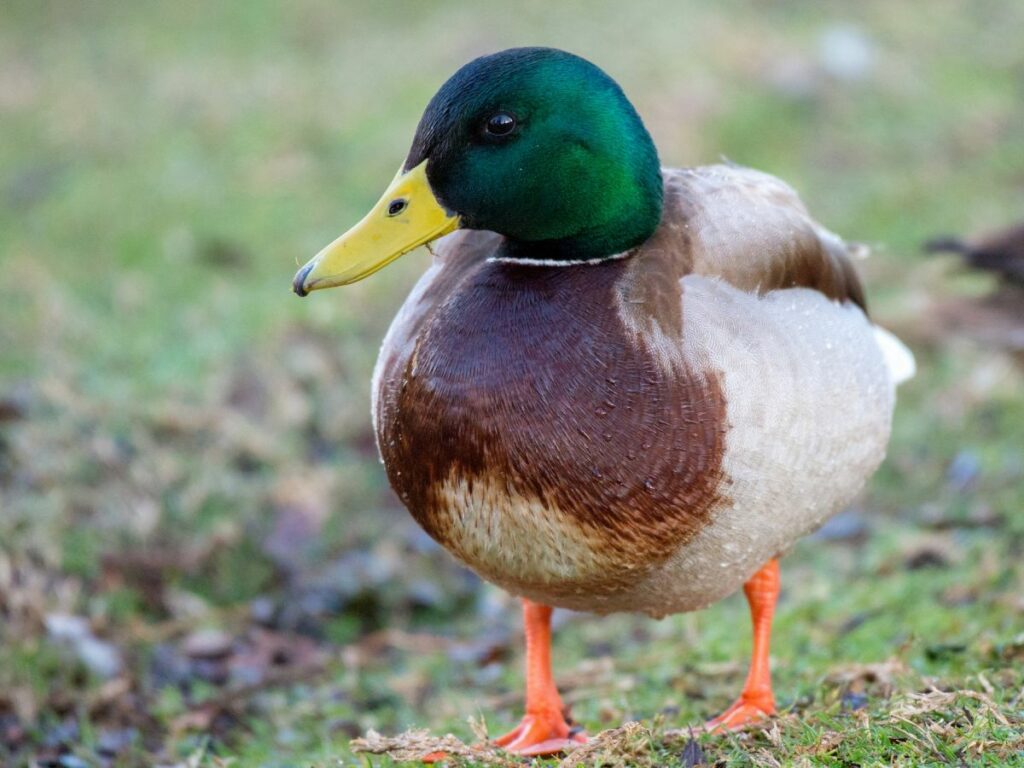
- Scientific Name: Anas platyrhynchos
- Size: 1.6 to 3.5 pounds
- Good in Captivity?: Yes
Mallards are one of the most recognizable ducks in the United States due to the blue stripe on their wings and the green head of the males. They forage for food both on land and on the water’s surface. They’re an ancestor of all domesticated duck breeds except Muscovy ducks. They’re one of the most common ducks to raise in captivity.
Wood Duck
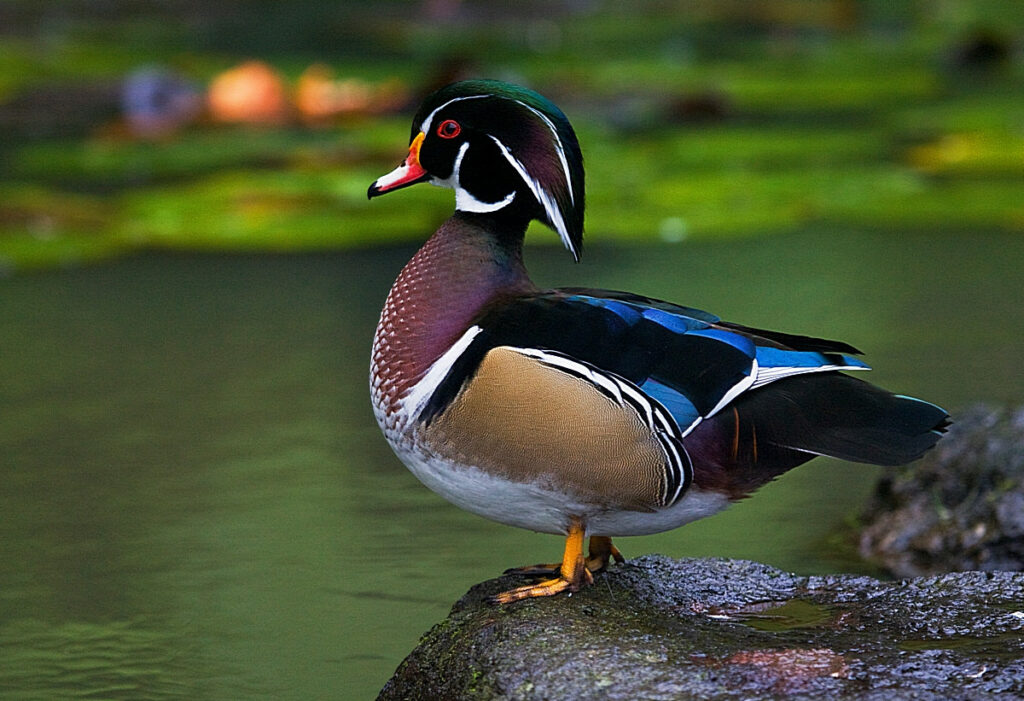
- Scientific Name: Aix sponsa
- Size: 1.4 to 2 pounds
- Good in Captivity?: No
Wood ducks are most commonly called dabblers, but they can also be described as perching ducks. They nest high in tree cavities but forage for food in swamps and marshes. They live across the United States and Canada, and the males have distinctive green plumage on their heads with long feathers on the back.
Gadwall
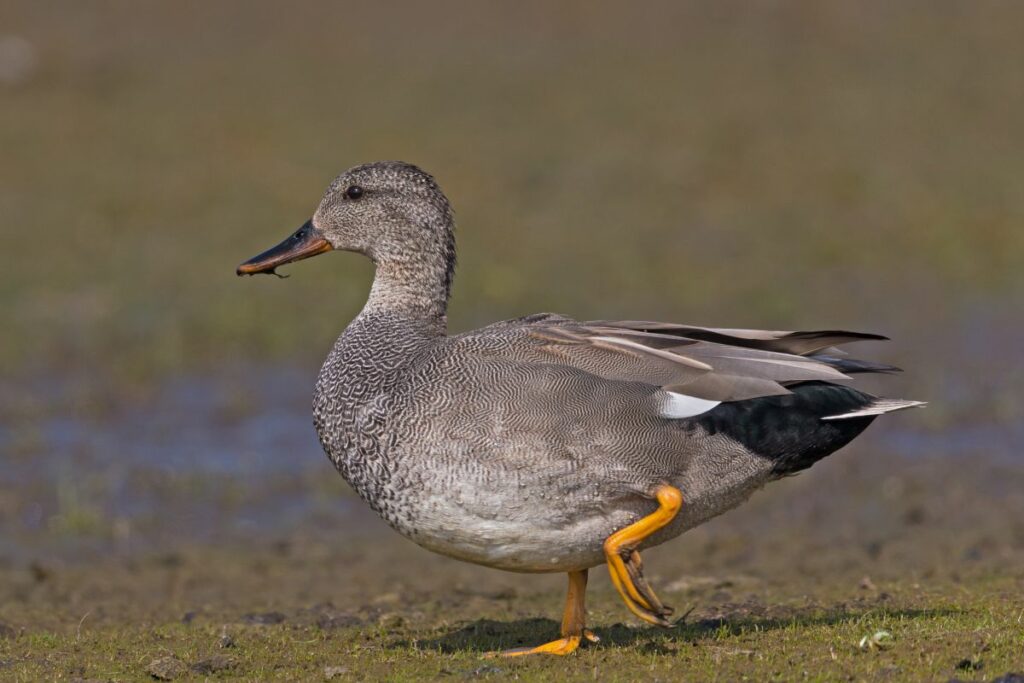
- Scientific Name: Mareca strepera
- Size: 1.1 to 2.3 pounds
- Good in Captivity?: No
Gadwalls are dabbling ducks that are dispersed across North America. While they gather their food off the water’s surface, they may also steal food from other ducks if given the opportunity. They usually eat plants, but during the breeding season, animal matter takes up about half of their diet. They may show aggression toward humans and other animals when protecting their nests.
Cinnamon Teal
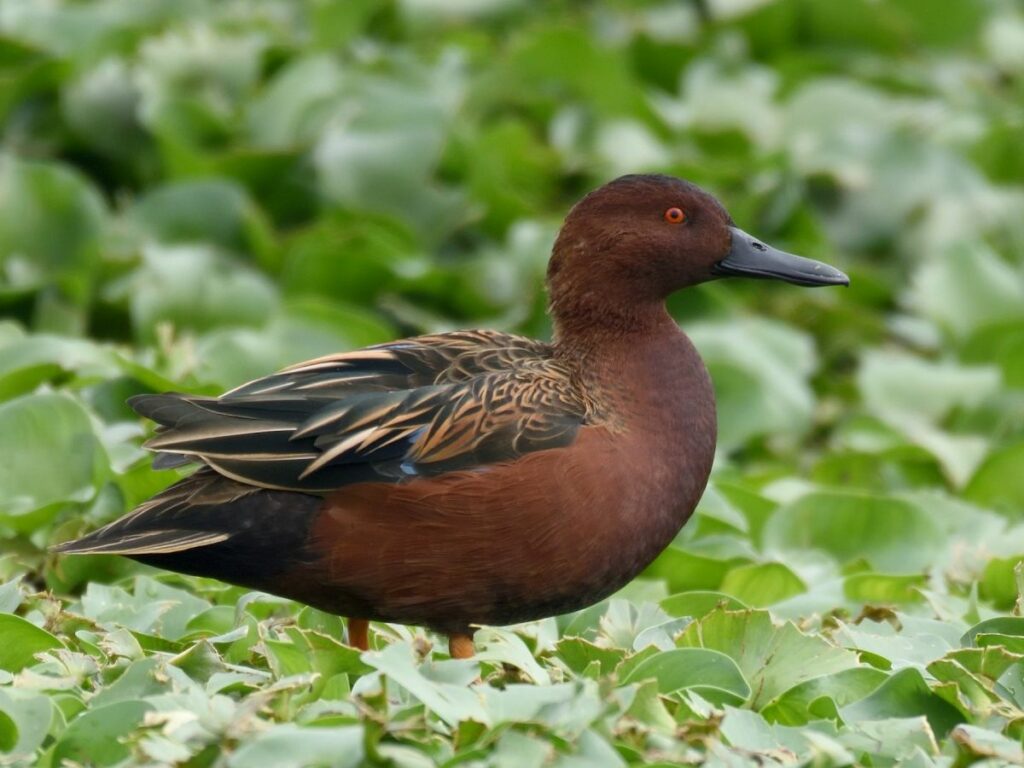
- Scientific Name: Anas cyanoptera
- Size: About 0.8 pounds
- Good in Captivity?: No
Cinnamon teals are another North American bird species. They’re identified by their cinnamon-colored feathers and red eyes. They prefer to dabble for plants, but they may also pick up aquatic insects and mollusks in the process. They will often follow another bird that’s feeding to look for food that has been stirred up in the water.
Blue-Winged Teal
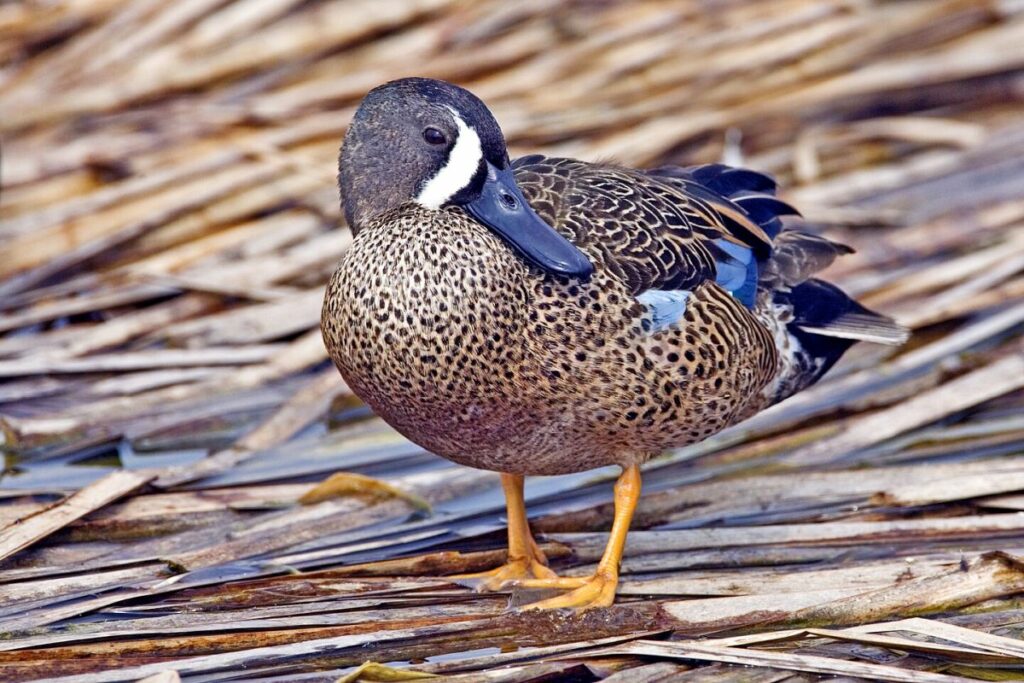
- Scientific Name: Anas discors
- Size: 0.8 to 1 pound
- Good in Captivity?: No
As the name implies, these ducks have blue patches on their wings, but they also have some green. They can be found across North America, and they prefer to gather in marshes, ponds, and flooded ditches. They can migrate impressive distances, with some traveling from Canada to South America in only a month.
American Wigeon
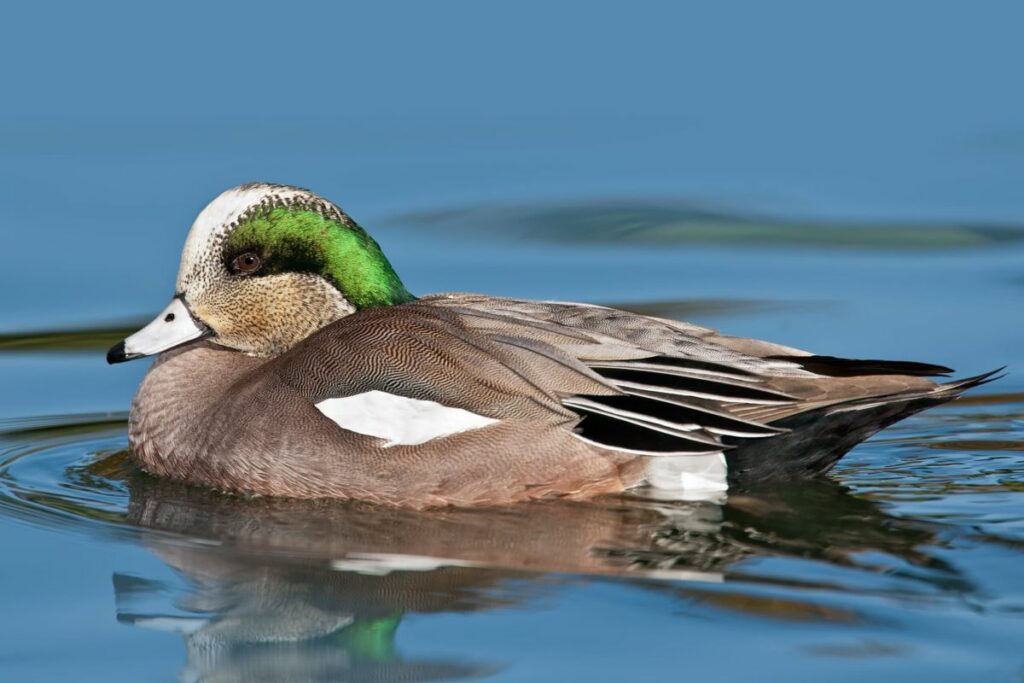
- Scientific Name: Mareca americana
- Size: 1.1 to 2.9 pounds
- Good in Captivity?: No
American Wigeons live across North America, and they’re one of the first birds each year to travel to their winter location. They have rounded heads, and the males can be recognized by their green feathers. They prefer wetlands and flooded grasslands as opposed to bodies of water because the shallow water is easier to forage in.
Eurasian Wigeon
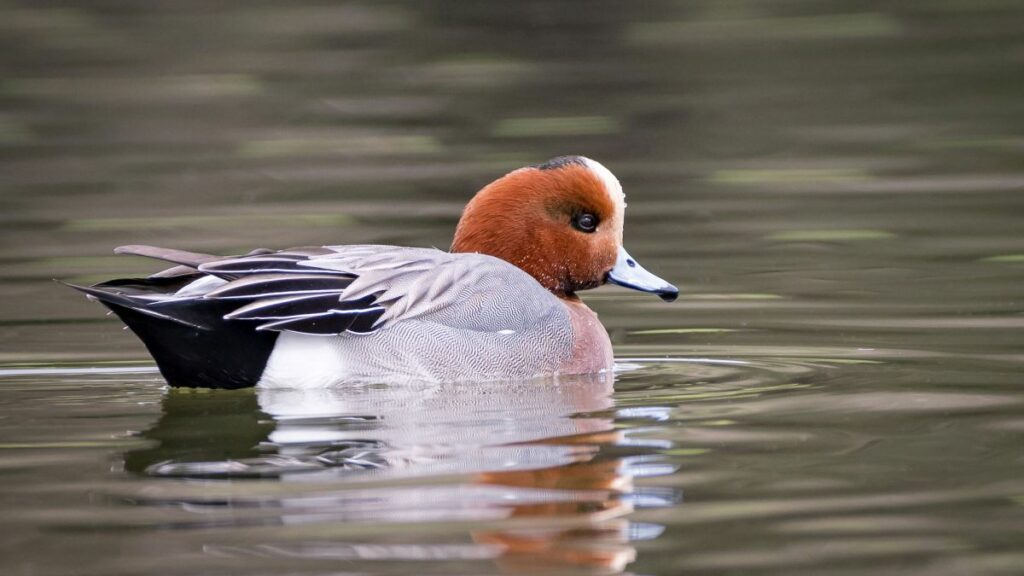
- Scientific Name: Mareca penelope
- Size: 1.1 to 2.4 pounds
- Good in Captivity?: No
Eurasian wigeons are native to Europe and Asia. They primarily eat plants from shallow wetlands and marshes. These birds often forage in flocks that include other bird species. They may try to steal food from other birds if they find an opportunity. Like most dabblers, they will submerge their head in the water while their butt stays afloat when foraging.
Northern Pintail
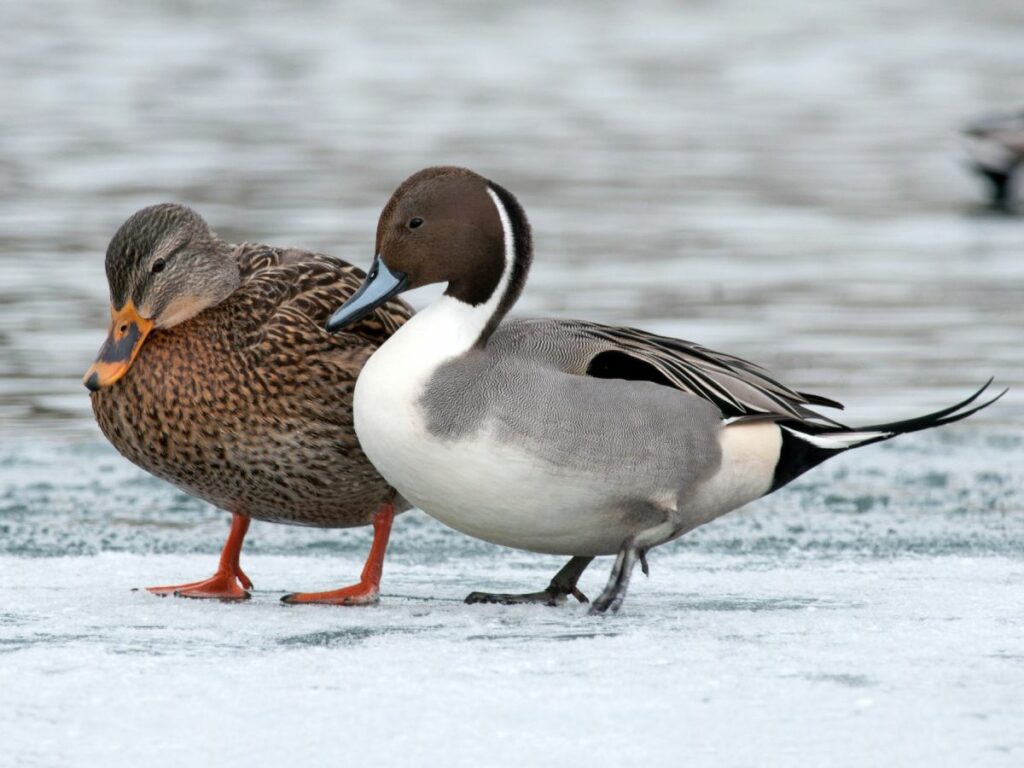
- Scientific Name: Anas acuta
- Size: 1 to 3 pounds
- Good in Captivity?: No
Even though these birds often forage on farmland, they don’t do well when kept in captivity because they need to migrate. They are great fliers that can reach up to 48 miles per hour in the air. They can fly up to 1,500 miles non-stop. These birds can be distinguished by their long necks and pointed tails. They can be found across North America.
Northern Shoveler
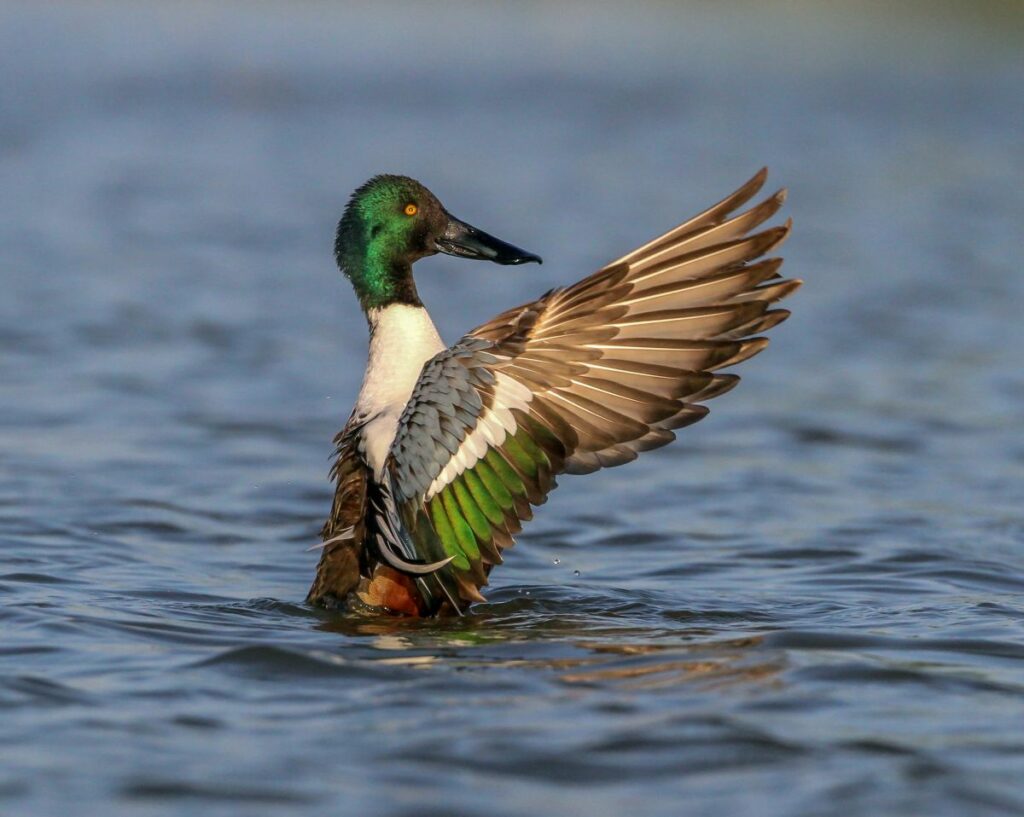
- Scientific Name: Spatula clypeata
- Size: 1.4 to 1.5 pounds
- Good in Captivity?: No
Northern shovelers have flat bills that are perfect for dabbling. They can scoop up items in their bills, which can filter out food. They eat a wide range of food, including invertebrates, crustaceans, and seeds. You might spot these unique ducks across North America.
Diving Ducks
There are less divers than dabblers, but there are still at least 20 species that fit into this category. Here are a few of the popular ones.
Redhead Duck
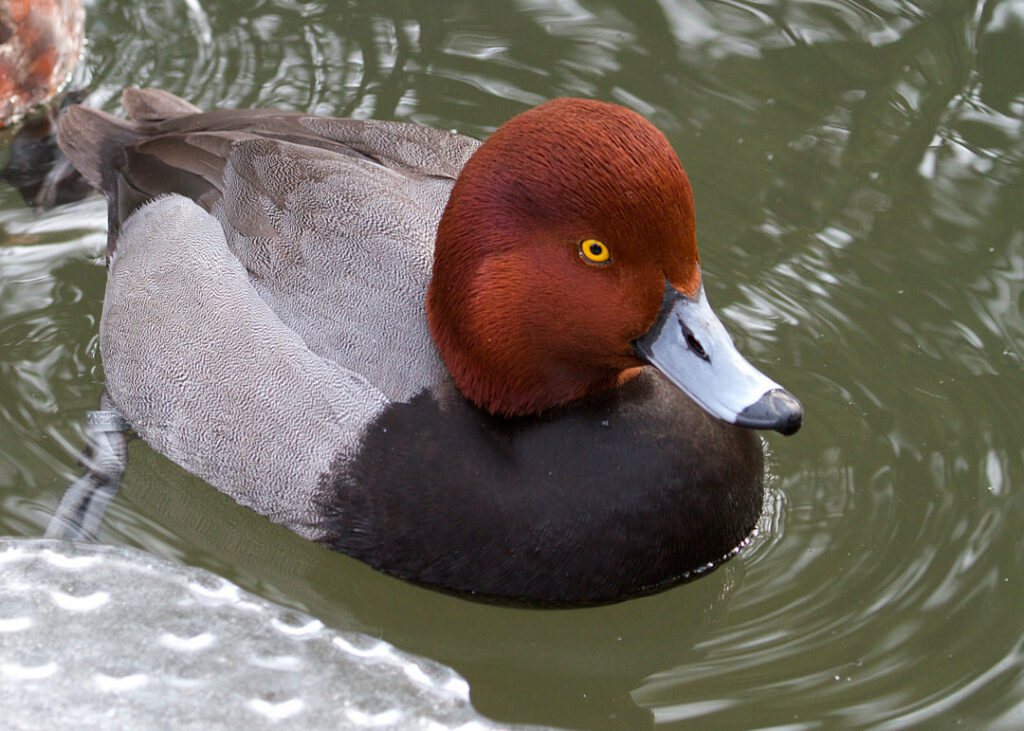
- Scientific Name: Aythya americana
- Size: 2 to 2.5 pounds
- Good in Captivity?: No
Redhead ducks spend their time at lakes, marshes, and estuaries of North America. They will dive completely underwater to reach plants and invertebrates. Only males have red heads while females are solid brown. Many female redhead ducks lay their eggs in the nests of other ducks and trick them into raising the eggs and ducklings as their own.
Canvasback
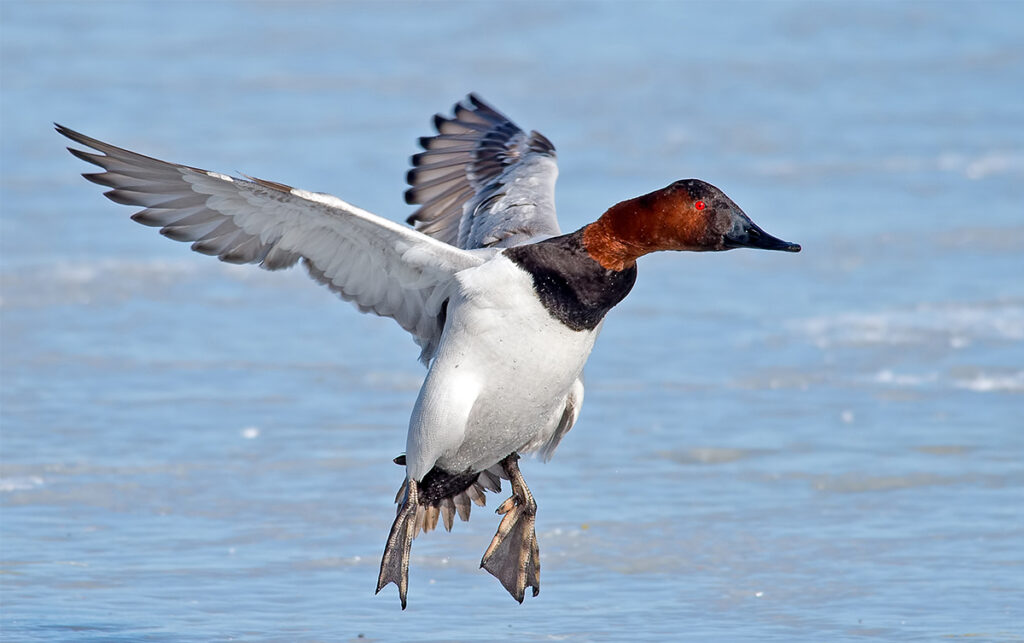
- Scientific Name: Aythya valisineria
- Size: 1.9 to 3.5 pounds
- Good in Captivity?: No
Canvasback ducks look almost identical to redhead ducks, but canvasbacks are slightly larger and their heads are less rounded. They can dive up to seven feet below the water’s surface to reach their favorite plants. They rarely spend time on dry land, so they often sleep while floating on the water. These red-headed ducks can be found all across North America.
Harlequin Duck
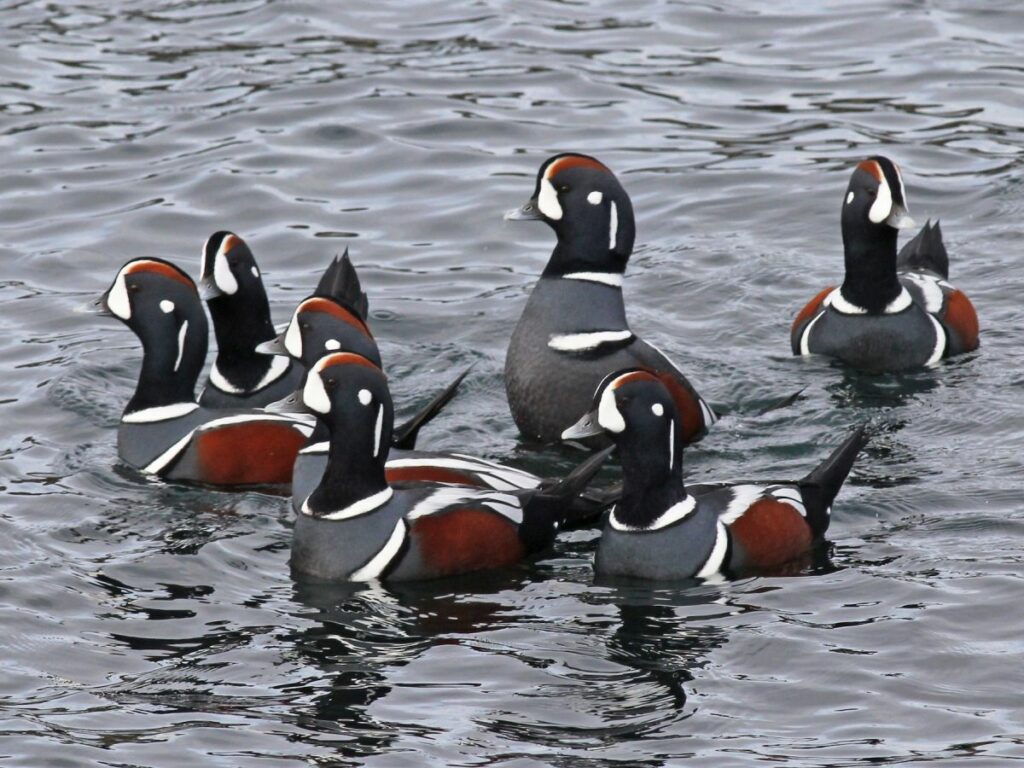
- Scientific Name: Histrionicus histrionicus
- Size: 1.1 to 2.5 pounds
- Good in Captivity?: No
Harlequin ducks are named for their beautiful black, white, and red plumage. They spend almost all their time on the Pacific coasts of Canada and Alaska. Their calls are described as squeaky like a mouse. They can dive an impressive distance of 70 feet below the surface to feed on fish, fish eggs, and aquatic insects.
Bufflehead
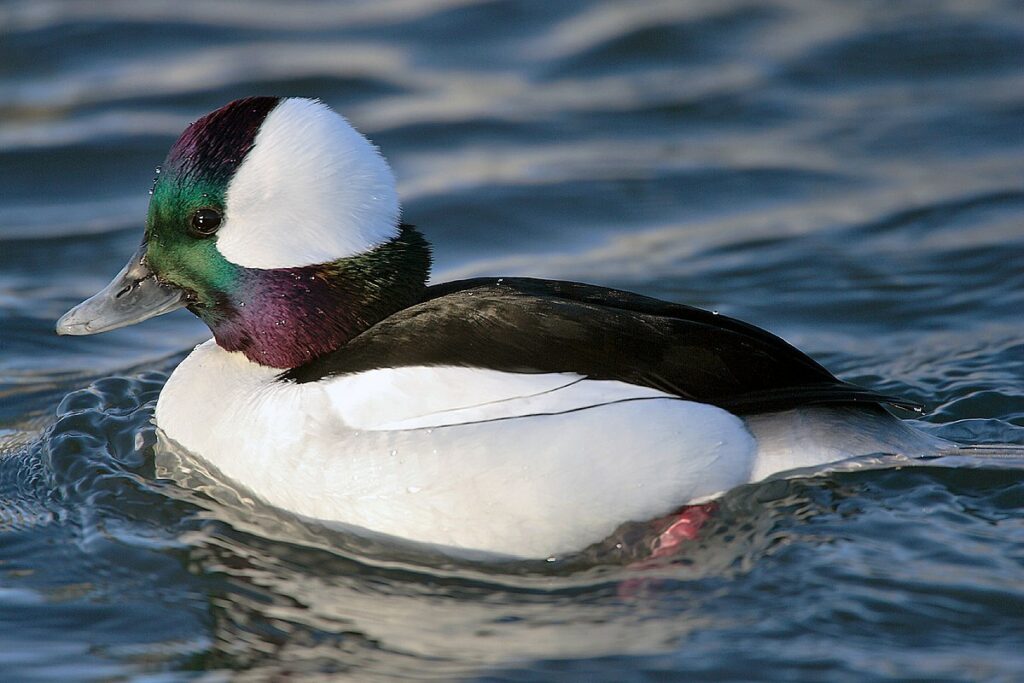
- Scientific Name: Bucephala albeola
- Size: 0.6 to 1.4 pounds
- Good in Captivity?: No
Buffleheads can be distinguished by their large, round heads, which have a white spot on them. Most of their time is spent foraging underwater. They usually dive for 12 to 25 seconds at a time, and they may eat crustaceans and invertebrates while they’re still underwater. They breed in upper North America and go south for the winter.
Hooded Merganser
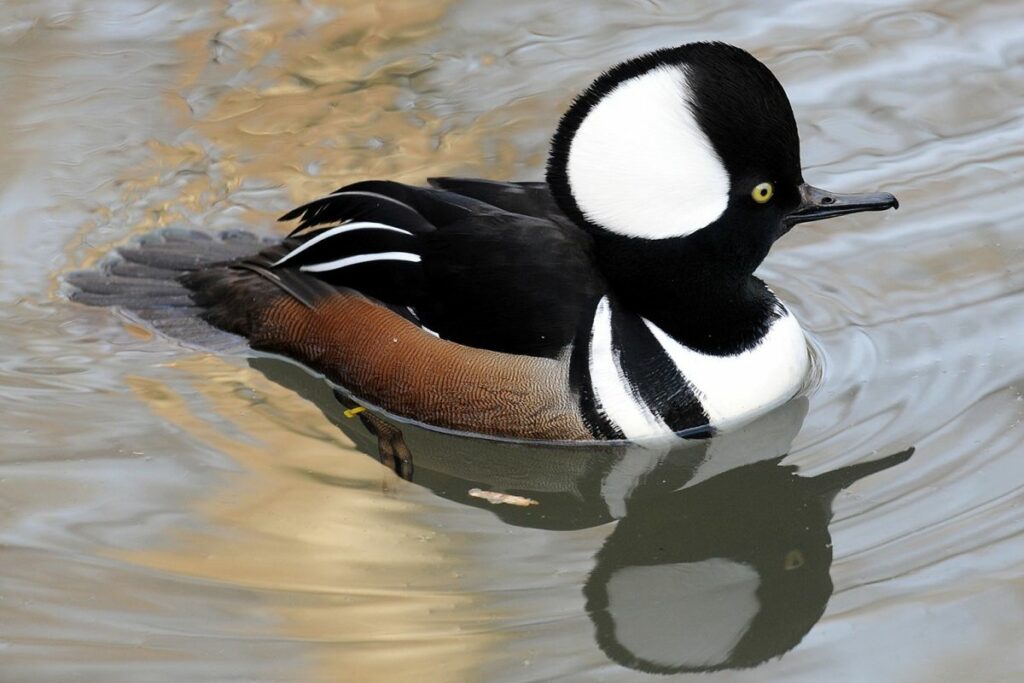
- Scientific Name: Lophodytes cucullatus
- Size: 1.2 to 1.5 pounds
- Good in Captivity?: No
Hooded mergansers have similar characteristics to buffleheads, but they’re larger. Both males and females have large feathers on their heads, but the females’ heads have dull brown feathers. These birds live in wooded wetlands of North America, where they submerge their bodies to look for fish, crayfish, aquatic insects, and vegetation.
Black Scoter
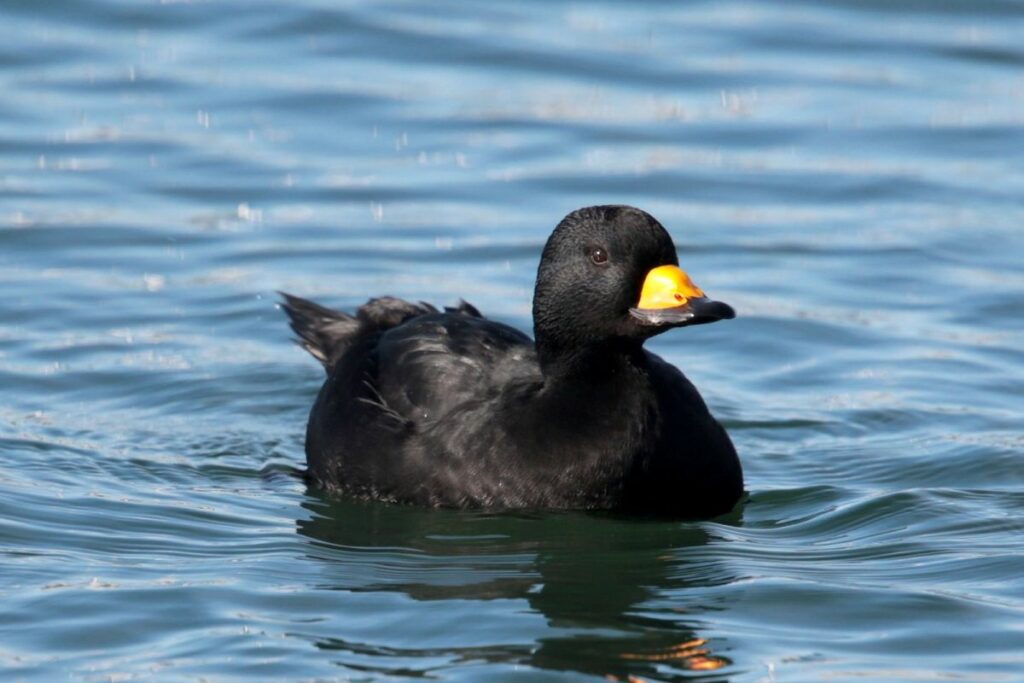
- Scientific Name: Melanitta americana
- Size: 2 to 2.3 pounds
- Good in Captivity?: No
Black scoters prefer shallower water than other diving ducks because they seek out shellfish. They’re often seen floating on the coasts of North America while making whistling sounds. They can dive up to 20 feet below the water, using their feet to paddle until they find food.
Common Goldeneye
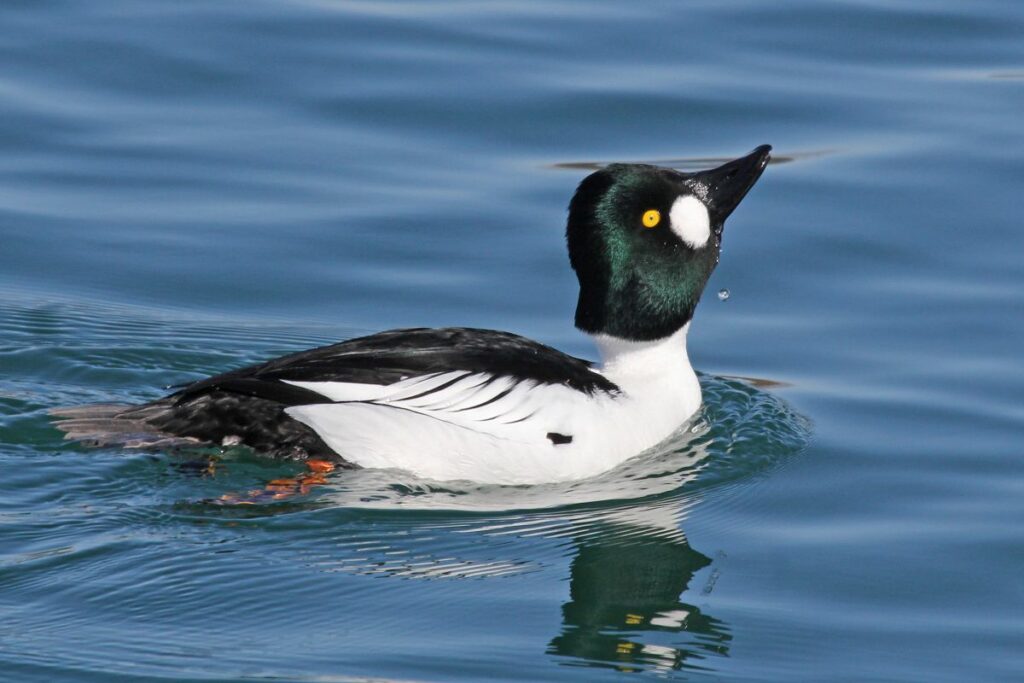
- Scientific Name: Bucephala clangula
- Size: 2 to 2.35 pounds
- Good in Captivity?: No
As the name implies, these ducks have bright yellow or amber eyes. They live near water in forests of Canada and Alaska. They feed primarily on fish and fish eggs, but they will seek out other animals and plants if needed. These birds often dive in sync, staying up to a minute underwater at a time.
Perching Ducks
There are about 14 perching ducks species, so here are a few examples of those duck types.
Blue Duck
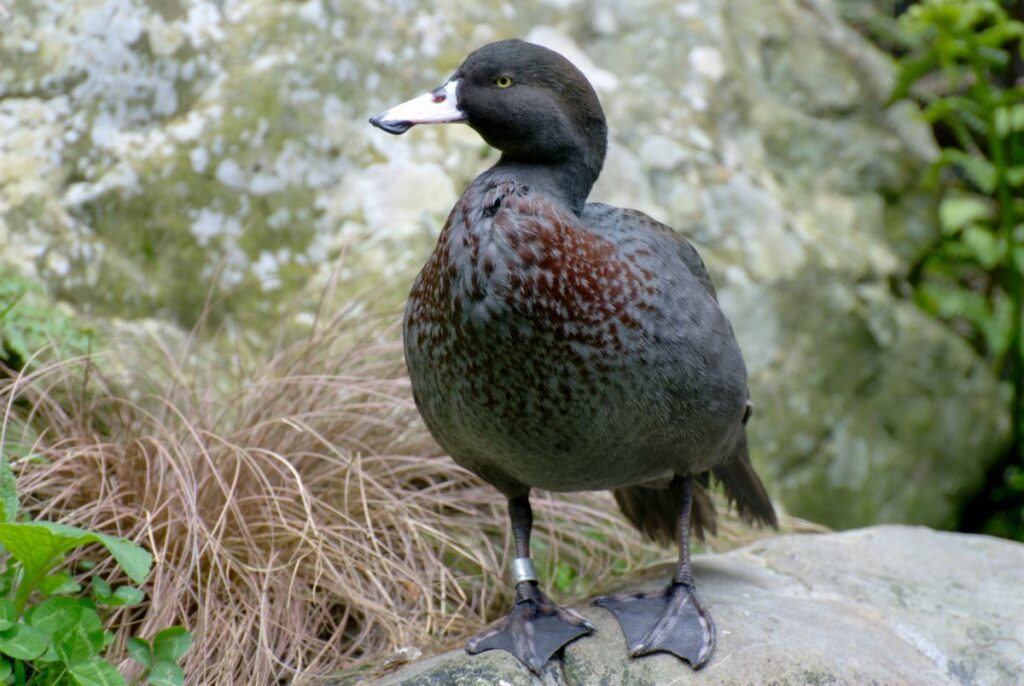
- Scientific Name: Hymenolaimus malacorhynchos
- Size: About two pounds
- Good in Captivity?: No
Blue ducks are named for their beautiful gray/blue feathers. They only live in New Zealand, and sadly, they’re endangered. They are strong swimmers that can withstand intense currents, but they rarely fly unless they have to. When diving, they feed almost solely on aquatic invertebrate larvae. It’s illegal to own a blue duck at a pet.
Brazilian Teal
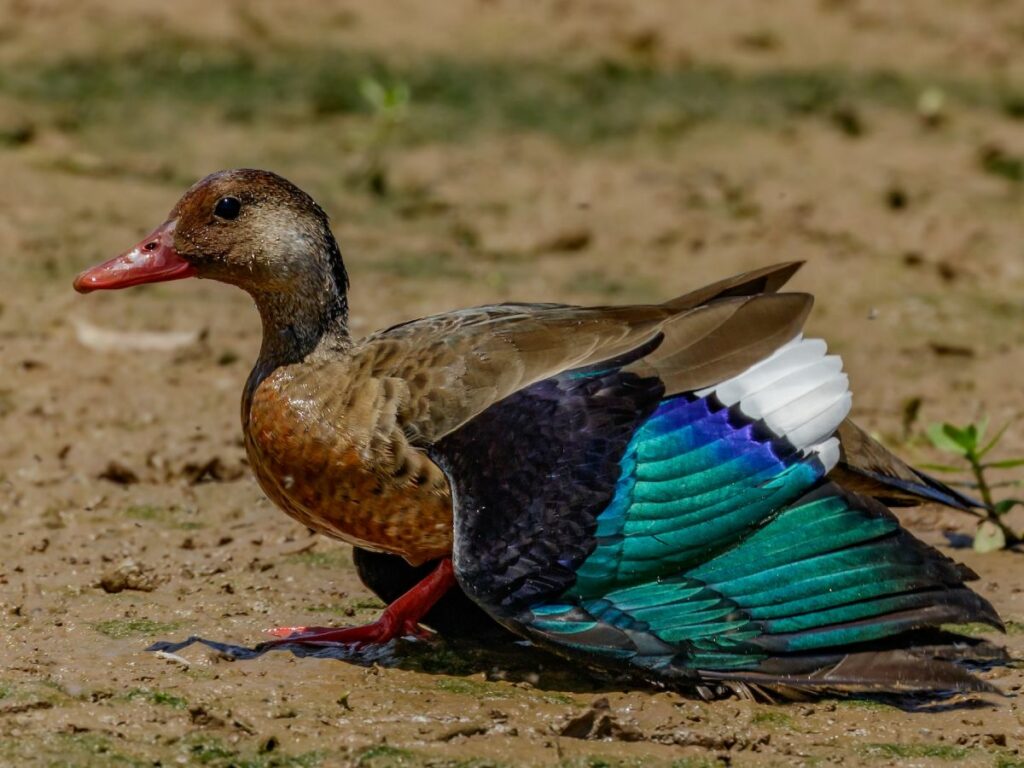
- Scientific Name: Amazonetta brasiliensis
- Size: 0.8 to 1.2 pounds
- Good in Captivity?: No
Brazilian teals look solid brown when they’re resting, but if they stretch out their wings, they reveal beautiful blue and green feathers. Males have bright red bills while females have brown bills. They live near freshwater with lots of vegetation across South America. The adults prefer plants while the ducklings only eat insects.
Comb Duck
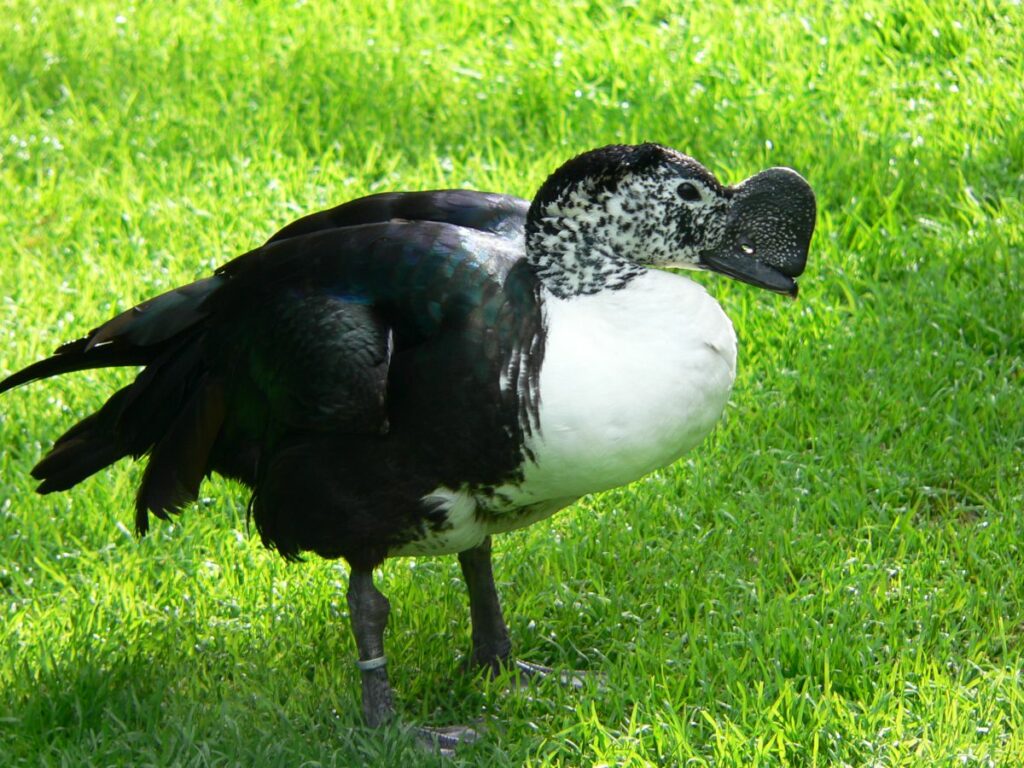
- Scientific Name: Sarkidiornis sylvicola
- Size: 2.3 to 6.4 pounds
- Good in Captivity?: No
Comb ducks, also known as knob-billed ducks, have one of the most unique appearances because they have a large knob sitting on their beak. The knob grows larger during breeding season to help attract mates. Their feathers are usually white with dark freckles. They can be found in tropical wetlands of South America. They often scavenge in groups of up to 100.
Torrent Duck
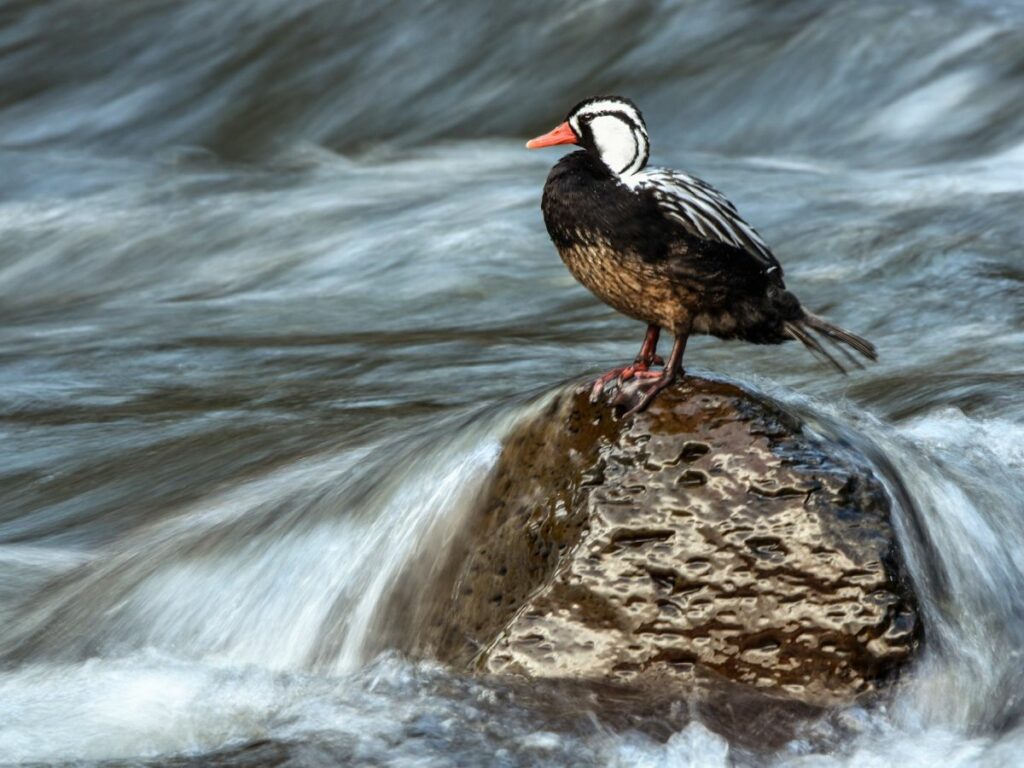
- Scientific Name: Merganetta armata
- Size: 0.7 to 1.1 pounds
- Good in Captivity?: In rare cases
Torrent ducks live in high elevations of South America, reaching up to 5,000 feet. They’re strong swimmers that swim in fast-flowing rivers, but they only fly short distances when they need to. Both males and females make whistling sounds to communicate, but males make more shrill sounds than females.
Muscovy Duck
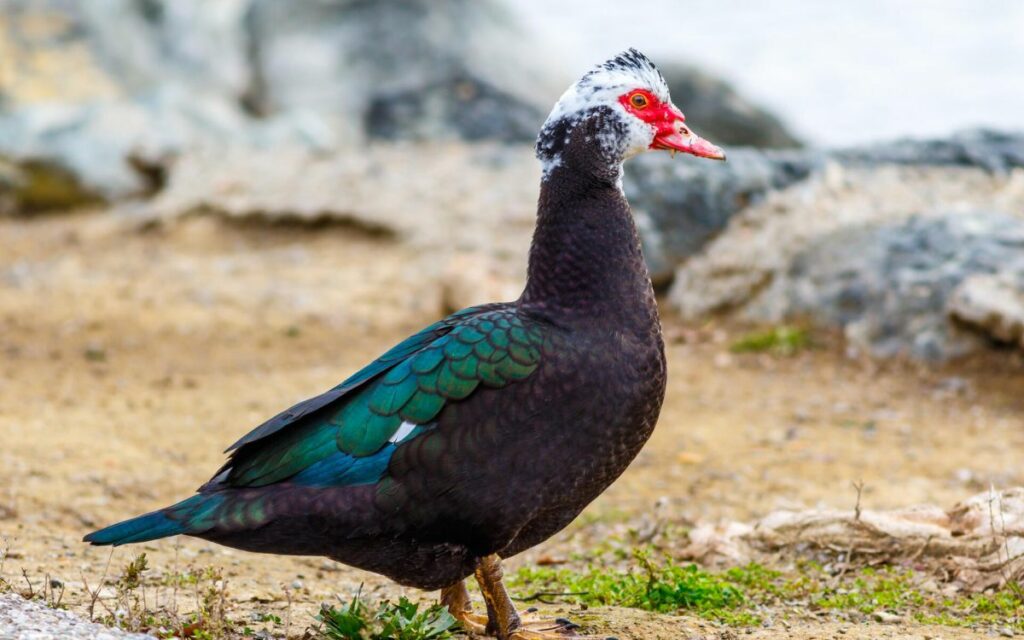
- Scientific Name: Cairina moschata
- Size: 6 to 15 pounds
- Good in Captivity?: Yes
Muscovy ducks are one of the most common domesticated ducks due to their calm, friendly demeanors. In the wild, they build their nests high in tree cavities, up to 65 feet off the ground. They don’t swim as much as other ducks because they have underdeveloped oil glands. They’re good birds for beginners because their needs aren’t hard to meet. They’re also one of the biggest duck species you can own.
Ringed Teal
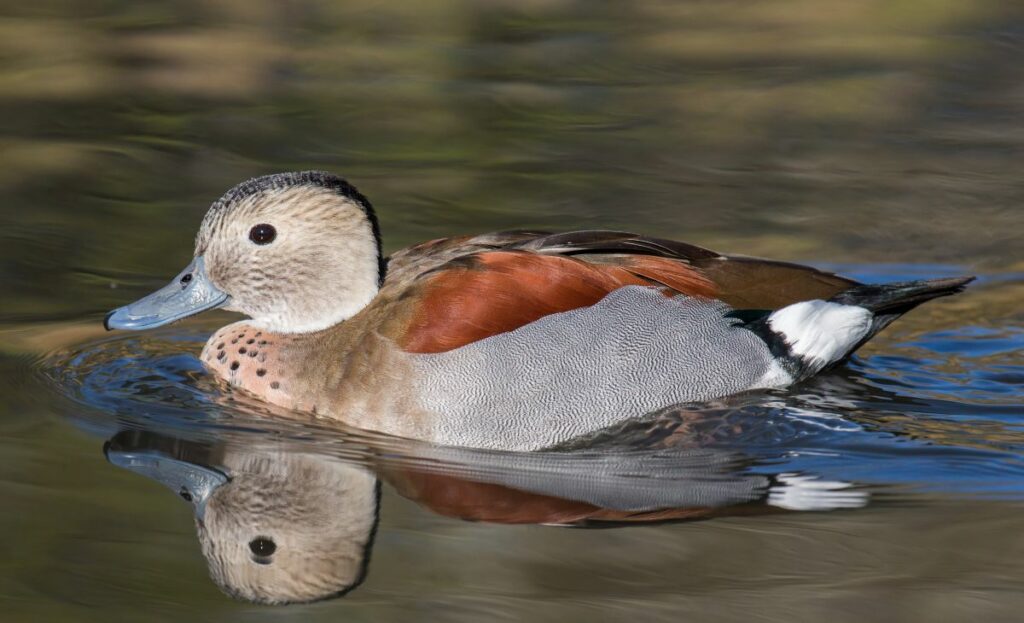
- Scientific Name: Callonetta leucophrys
- Size: 0.6 to 0.8 pounds
- Good in Captivity?: Sometimes
Ringed teals can be found in swamp forests of South America. They have some characteristics of both divers and dabblers because they may stick their heads underwater or fully submerge their bodies to find food. They eat a variety of plants and invertebrates. Female ringed teal calls almost sound similar to a cat saying “meow.”
Which Ducks Can Be Kept in Captivity?
There are many different types of ducks that can be kept as pets or livestock, such as:
- Pekin ducks
- Cayuga ducks
- Muscovy ducks
- Mallard ducks
- Crested ducks
- Indian runner ducks
- Call ducks
Most wild ducks would not do well in captivity because they need to migrate. So, domesticated ducks are the ones that are the most adaptable and docile.
Do All Ducks Fall Under Dabbling, Diving, or Perching?
Most duck species fall into one of the three categories, but not all of them do. Some species have a combination of these characteristics, so they’re not commonly associate with one.
Which Types of Ducks are For You?
There are way more duck species than the average person knows about. They can be dabbling, diving, or perching ducks. They could also be a unique species that doesn’t fit into those categories.
Many types of ducks can be kept in captivity for purposes like egg laying and companionship. So, if you’re interested in raising ducks, it’s a good idea to do your research to decide which species is best for you.
